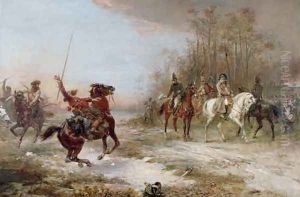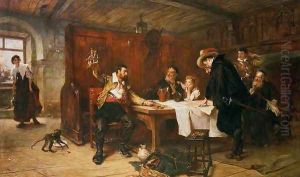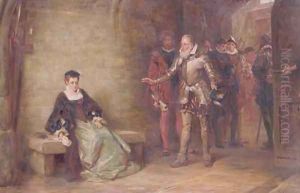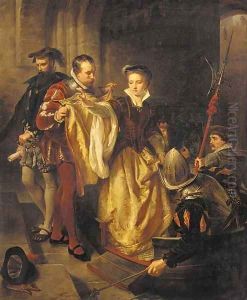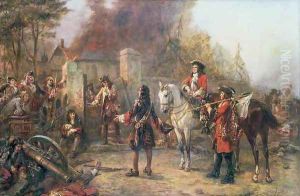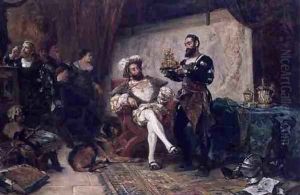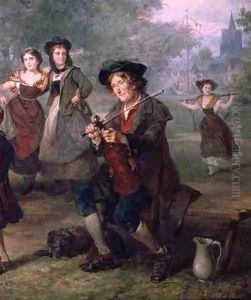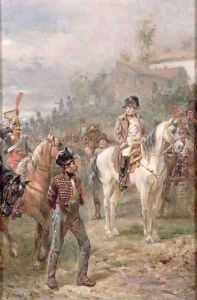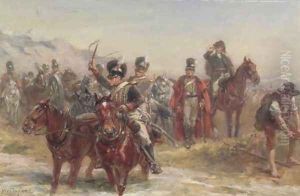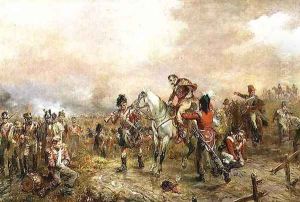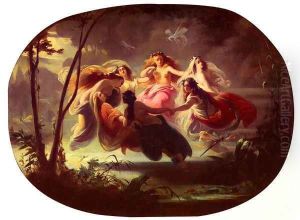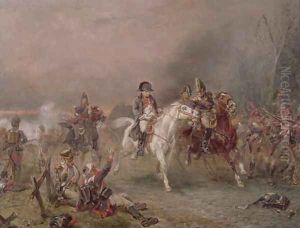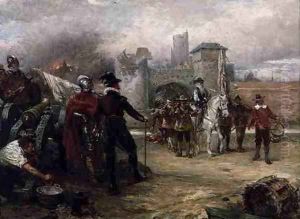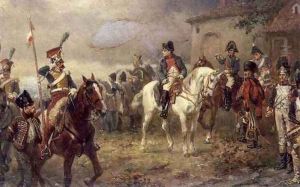Robert Alexander Hillingford Paintings
Robert Alexander Hillingford was a British painter known for his historical scenes, often depicting famous historical events and personages. Born on January 28, 1828, in London, England, Hillingford showed an early interest in art and went on to study painting at the Academy of Fine Arts in Düsseldorf, Germany. It was during this period that he developed his penchant for historical accuracy and attention to detail, which would become hallmarks of his work.
After his studies in Düsseldorf, Hillingford traveled extensively throughout Europe, including Italy, where he was particularly inspired by the Renaissance masters. His travels and studies imbued him with a sense of classical composition and a rich palette that he would later apply to his historical paintings.
Hillingford returned to England in the 1850s and began to exhibit his work at the Royal Academy and the British Institution. His paintings often depicted scenes from English and European history, including moments from the lives of famous figures such as William Shakespeare, Cardinal Richelieu, and Napoleon Bonaparte. He was also known for his paintings of scenes from the Napoleonic Wars.
Despite the historical nature of his subjects, Hillingford's work was noted for its theatricality and vibrant colors, which brought the past to life in a way that was accessible and entertaining to the Victorian public. His ability to capture the essence of historical narratives in a single frame made his paintings popular among art collectors and the public alike.
Throughout his career, Hillingford enjoyed considerable success and continued to paint prolifically until his death on March 3, 1904. Although he never reached the same level of fame as some of his contemporaries, his work remains a valuable record of Victorian tastes and interests in historical subject matter. Today, his paintings can be found in various art galleries and private collections, appreciated for their historical value and their intrinsic artistic qualities.


